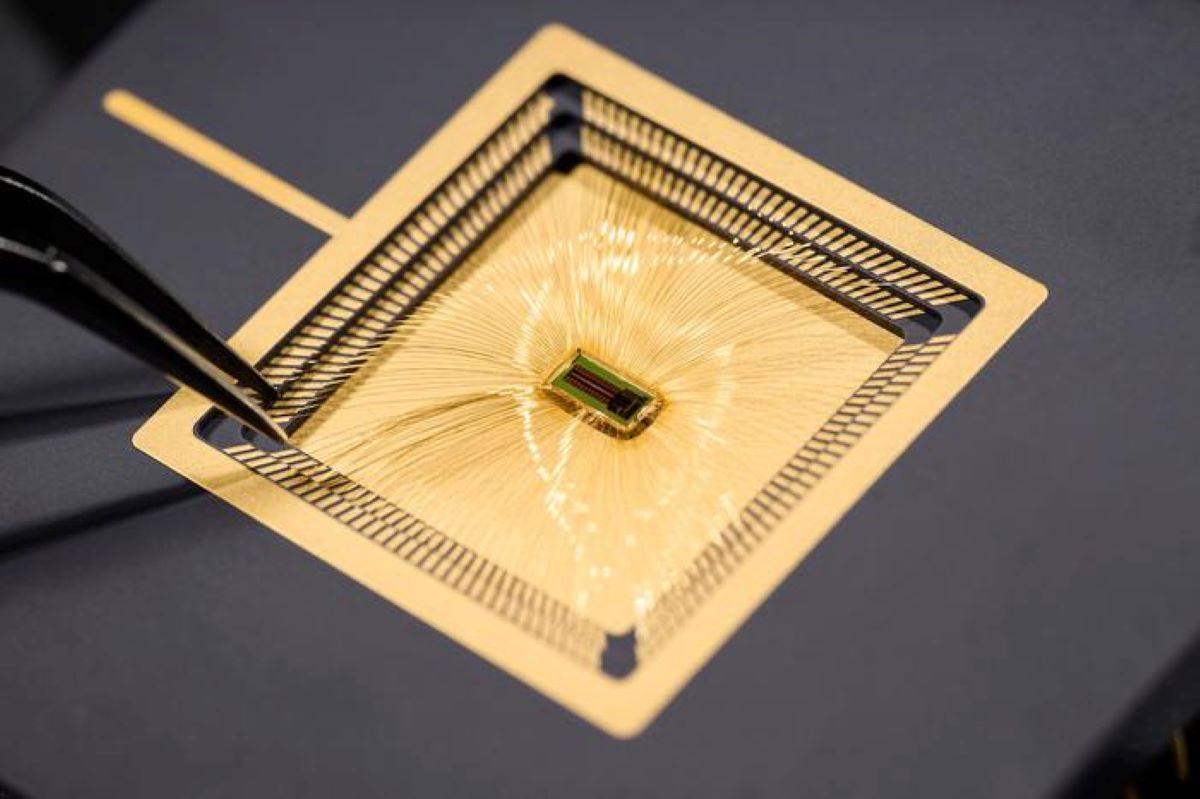Does your competent? doctor have enough functioning brain cells to see the possibilities of this for aphasia? And then do the hard work of getting research done for strokes with aphasia? NO? So you don't have a functioning stroke doctor, unless you are there to guide them in what needs doing?
Miniaturized Brain-Machine Interface Translates Thoughts Into Text
Summary: Researchers developed a compact, low-power brain-machine interface (BMI) called MiBMI, designed to enhance communication for individuals with severe motor impairments. The device translates neural activity into text with 91% accuracy, using a highly miniaturized system that processes data in real-time.
This innovation opens the door to practical, implantable BMIs, promising significant improvements in quality of life for patients with conditions like ALS and spinal cord injuries.
Key Facts:
- MiBMI processes neural signals in real-time, converting thoughts into text with 91% accuracy.
- The device’s extreme miniaturization makes it suitable for implantable use, with minimal invasiveness.
- MiBMI could expand beyond handwriting to applications like speech decoding and movement control.
Source: EPFL
Brain-machine interfaces (BMIs) have emerged as a promising solution for restoring communication and control to individuals with severe motor impairments. Traditionally, these systems have been bulky, power-intensive, and limited in their practical applications.
Researchers at EPFL have developed the first high-performance, Miniaturized Brain-Machine Interface (MiBMI), offering an extremely small, low-power, highly accurate, and versatile solution.
Published in the latest issue of the IEEE Journal of Solid-State Circuits and presented at the International Solid-State Circuits Conference, the MiBMI not only enhances the efficiency and scalability of brain-machine interfaces but also paves the way for practical, fully implantable devices.

This technology holds the potential to significantly improve the quality of life for patients with conditions such as amyotrophic lateral sclerosis (ALS) and spinal cord injuries.
The MiBMI’s small size and low power are key features, making the system suitable for implantable applications. Its minimal invasiveness ensures safety and practicality for use in clinical and real-life settings.
It is also a fully integrated system, meaning that the recording and processing are done on two extremely small chips with a total area of 8mm. This is the latest in a new class of low-power BMI devices developed at Mahsa Shoaran’s Integrated Neurotechnologies Laboratory (INL) at EPFL’s IEM and Neuro X institutes.
“MiBMI allows us to convert intricate neural activity into readable text with high accuracy and low power consumption.This advancement brings us closer to practical, implantable solutions that can significantly enhance communication abilities for individuals with severe motor impairments,” says Shoaran.
Brain-to-text conversion involves decoding neural signals generated when a person imagines writing letters or words. In this process, electrodes implanted in the brain record neural activity associated with the motor actions of handwriting. The MiBMI chipset then processes these signals in real-time, translating the brain’s intended hand movements into corresponding digital text.
This technology allows individuals, especially those with locked-in syndrome and other severe motor impairments, to communicate by simply thinking about writing, with the interface converting their thoughts into readable text on a screen.
“While the chip has not yet been integrated into a working BMI, it has processed data from previous live recordings, such as those from the Shenoy lab at Stanford, converting handwriting activity into text with an impressive 91% accuracy,” says lead author Mohammed Ali Shaeri.
The chip can currently decode up to 31 different characters, an achievement unmatched by any other integrated systems.
“We are confident that we can decode up to 100 characters, but a handwriting dataset with more characters is not yet available,” adds Shaeri.
Current BMIs record the data from electrodes implanted in the brain and then send these signals to a separate computer to do the decoding. The MiBMI chips records the data but also processes the information in real time—integrating a 192-channel neural recording system with a 512-channel neural decoder.
This neurotechnological breakthrough is a feat of extreme miniaturization that combines expertise in integrated circuits, neural engineering, and artificial intelligence. This innovation is particularly exciting in the emerging era of neurotech startups in the BMI domain, where integration and miniaturization are key focuses. EPFL’s MiBMI offers promising insights and potential for the future of the field.
To be able to process the massive amount of information picked up by the electrodes on the miniaturized BMI, the researchers had to take a completely different approach to data analysis.
They discovered that the brain activity for each letter, when the patient imagines writing it by hand, contains very specific markers, which the researchers have named distinctive neural codes (DNCs). Instead of processing thousands of bytes of data for each letter, the microchip only needs to process the DNCs, which are around a hundred bytes.
This makes the system fast, accurate, and with low-power consumption. This breakthrough also allows for faster training times, making learning how to use the BMI easier and more accessible.
Collaborations with other teams at EPFL’s Neuro-X and IEM Institutes, such as with the laboratories of Grégoire Courtine, Silvestro Micera, Stéphanie Lacour, and David Atienza promise to create the next generation of integrated BMI systems. Shoaran, Shaeri and their team are exploring various applications for the MiBMI system beyond handwriting recognition.
“We are collaborating with other research groups to test the system in different contexts, such as speech decoding and movement control. Our goal is to develop a versatile BMI that can be tailored to various neurological disorders, providing a broader range of solutions for patients,” says Shoaran.
About this BMI and neurotech research news
Author: Michael Mitchell
Source: EPFL
Contact: Michael Mitchell – EPFL
Image: The image is credited to EPFL / Lundi13 – CC-BY-SA 4.0
Original Research: Closed access.
“A 2.46mm2 Miniaturized Brain-Machine Interface (MiBMI) Enabling 31-Class Brain-to-Text Decoding” by Mahsa Shoran et al. IEEE Journal of Solid-State Circuits
No comments:
Post a Comment